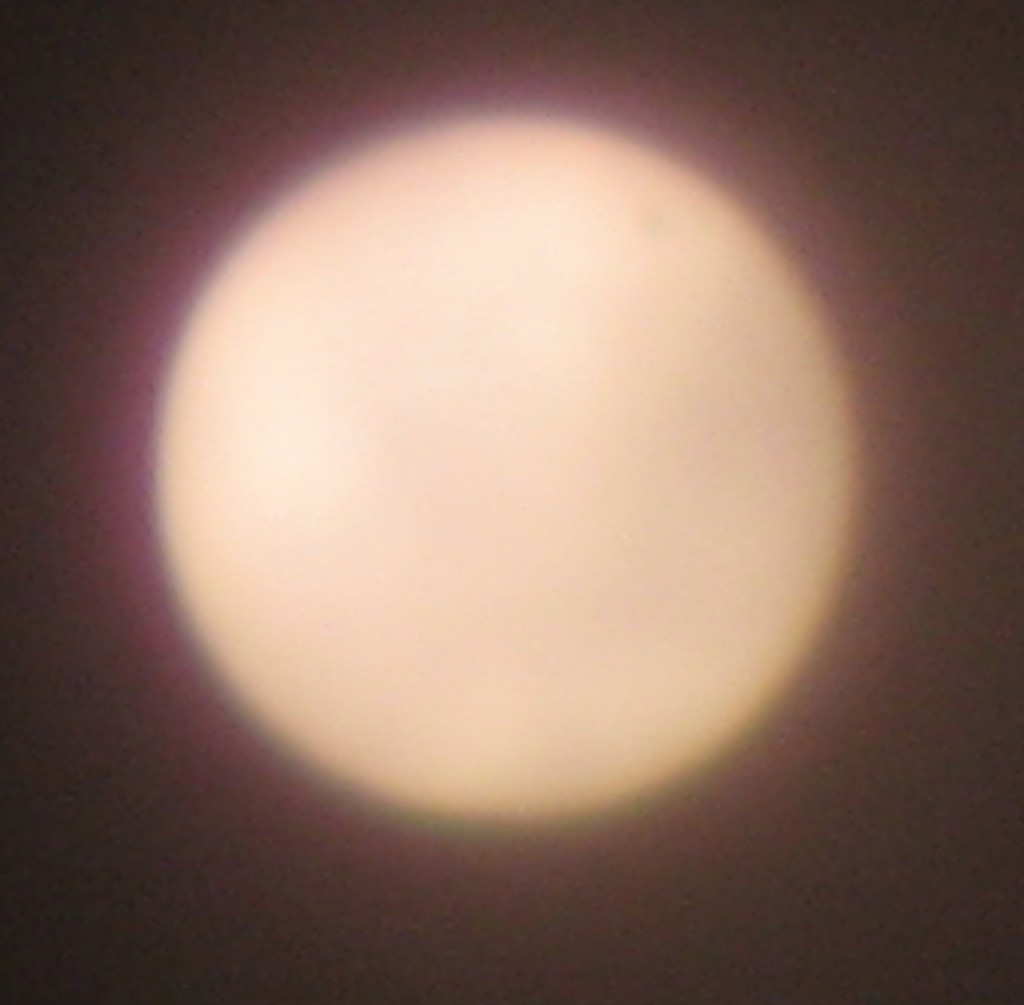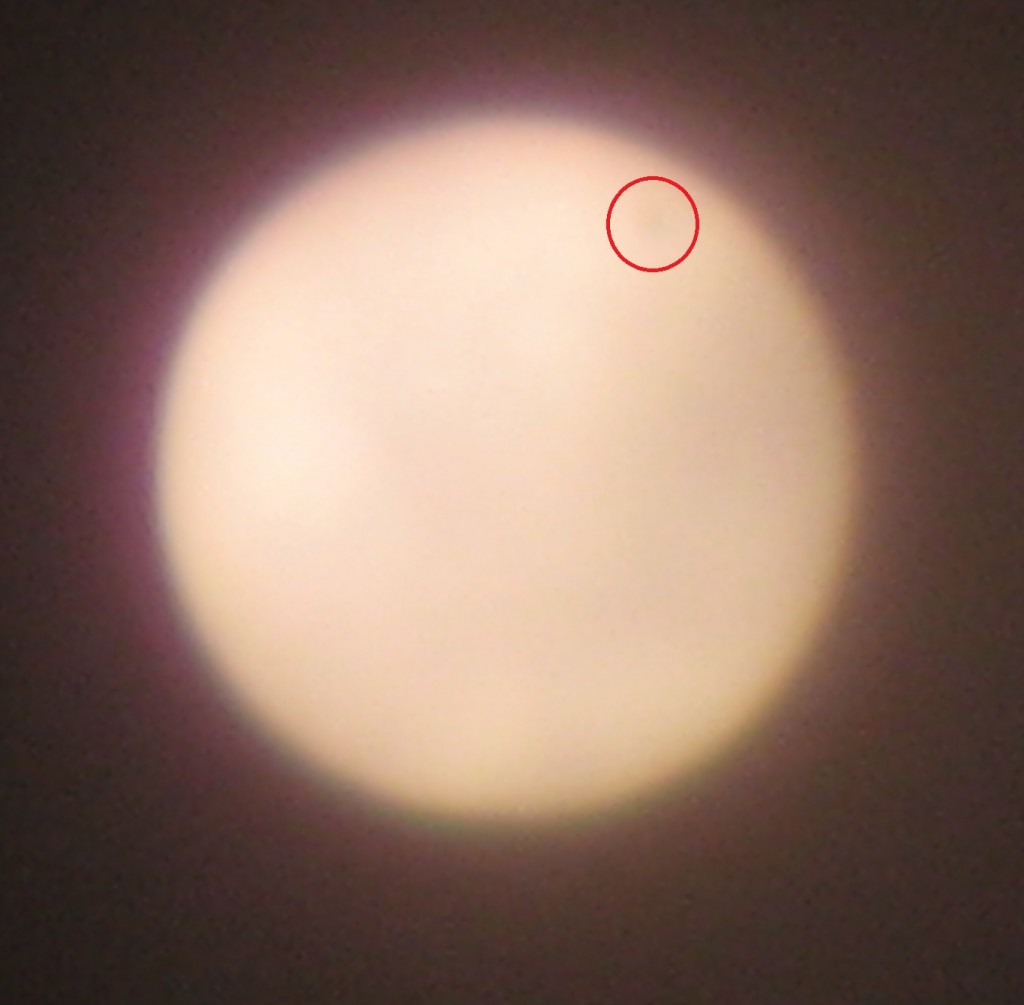I was pretty worried all the clouds that piled up this afternoon would make the Venus transit impossible for me to see, but I got him just in time to catch a cloud break. I was able to use my trusty sextant that I used to photograph the recent solar eclipse to see the planet in front of the sun, but I thought it would be too bright to capture an image. But here it is, overexposed though it may be!
In case you can’t see the disk of the planet, here it is highlighted:
Click on the images to enlarge.
You can find better pictures on line, but nothing beats seeing something like this with your own eyes.
More tax pledge stuff tomorrow. But a once-in-a-lifetime celestial event bears a pause and a look!






What time GMT did you take the photos. Was it shortly after ingress?
Man – it’s been awhile since I’ve had to convert local time to GMT… According to the clock on my camera, it was about 2316 GMT, a little over an hour after ingress.
Somes again:
This puzzles me since the direction of Venus’s track should be from left to right since that is the direction of orbit. However I also viewed the transit through my sextant and got the same results as you did, with initial ingress at top right.NASA slow motion video showed entry and track left to right!
As I was able to observe it (and I’m guessing you’re roughly at my latitude), the disk “entered” at top right, and then moved “downward” where it would have exited at about 4 or 5 O’clock. (I caught another brief cloud break just before sunset (didn’t catch a picture, sadly), and I could see Venus sillouetted at about the three o’clock position and continuing downward.) I was thrown by this too, a little, but then I realized it matches the direction of the arc of travel for all the planets I see in the night sky.
The NASA images come from orbit, where they can orient themselves to “stand” perpendicular to the plane of the eliptic, so from that standpoint, Venus moves left to right. But we’re standing at 39.5 degrees north latitude (I am, anyway), with the Earth turning away from the sun under my feet. So from our perspective, the image of the sun/Venus “rolls” over as our vantage point rotates around.
Disclaimer – I had to law school because my brain is ill-equiped for the kind of math that makes engineers and physicists. I think this is right, but I don’t want to overstate any cosmic understanding.
http://transitofvenus.nl/wp/where-when/venus-curved-trajectory/
Somes final,
Here is the answer